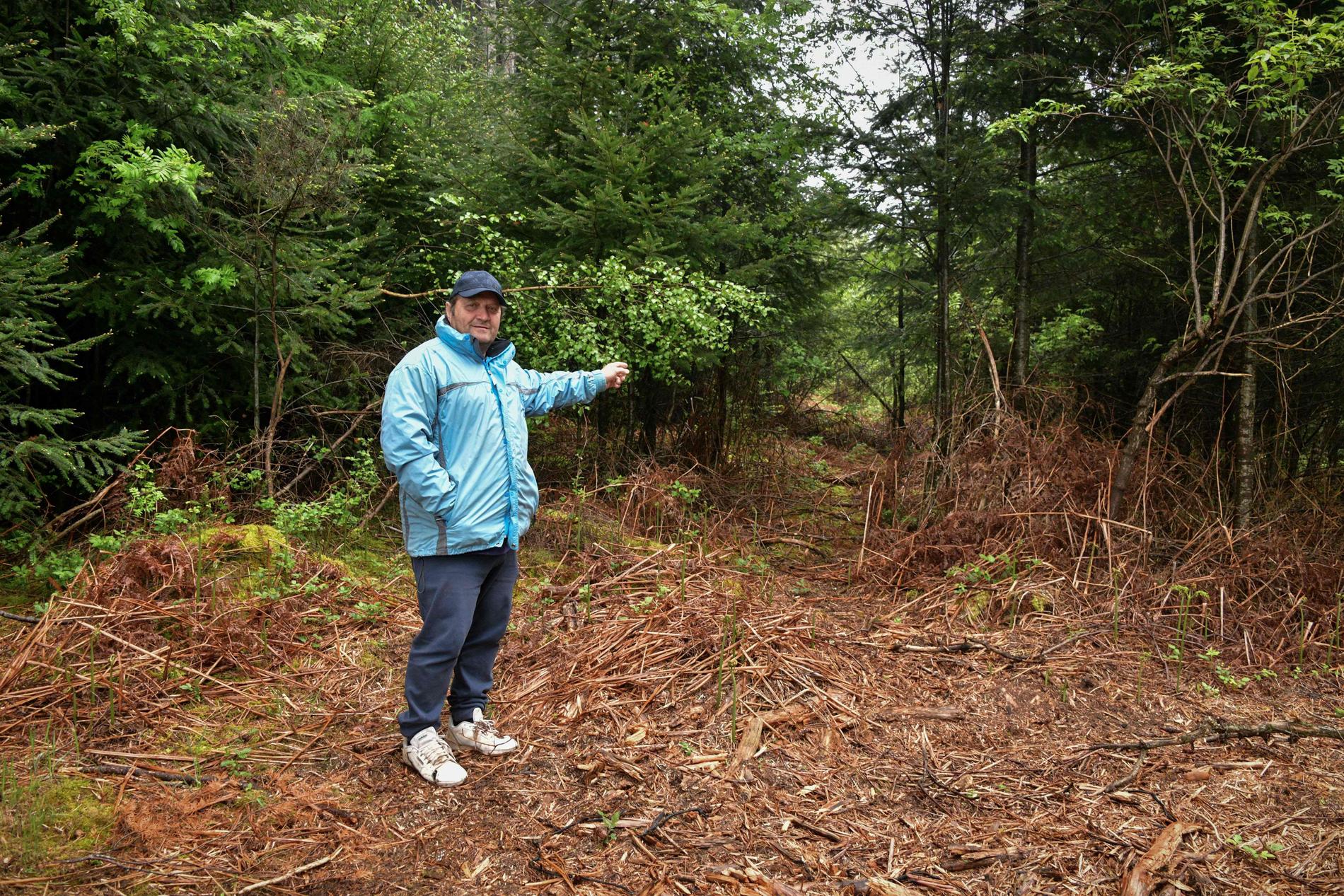In 1944, up to 40 German soldiers were executed by the French resistance movement FTP. Now the last surviving member tells how they died.
- Edmond Réveil (98) breaks the silence on the FTP’s mass execution of German soldiers in Meymac, France, in 1944.
- Réveil is the last surviving member of the Francs et Tireurs Partisans (FTP) resistance movement in the area.
- The mass execution took place shortly after D-Day, and after Germany executed several hostages.
- Réveil tells about forced participation in the execution.
- The German War Graves Commission will excavate in the search for the remains of the executed soldiers.
- Meymac’s mayor says Réveil wants the dead soldiers’ families to know what happened.
For almost 80 years, Edmond Réveil (98) has remained silent about the June day in 1944, when the resistance movement Francs et Tireurs Partisans (FTP) mass-executed several tens of German soldiers in Meymac in France.
The 98-year-old is the last surviving member of the local branch of the FTP, and witnessed the mass execution, writes the French newspaper The mountain.
However, he has never told what happened, until now.
In a judicial interrogation filmed on video, Réveil explains that he and other resistance members were transporting prisoners of war when they received orders to execute them. According to Réveil, his commander must have “wept like a child” when the message came.
– He asked for volunteers to carry out the order. Everyone had someone they wanted to kill, but there were some of us – and I was one of them – who said we didn’t want to participate.
Shortly after D-Day D-Day D-Day is the designation of June 6, 1944, the first day of the Allied invasion and liberation of France during World War II.On June 6, 1944, Réveil and other FTP members managed to capture over 50 German soldiers near Meymac. Three days later, the Germans struck back by publicly executing 99 hostages. On June 10, 643 people were also killed in the village of Oradour-Sur-Glane by SS Das ReichSS Das ReichElite soldiers from the German Nazi Party’s paramilitary organization, the Waffen-SS. The division served during the invasion of France and took part in several major battles on the Eastern Front. the division.
The mass execution of the German prisoners must have taken place on 12 June. Réveil says that it was a “horribly hot day”.
– We made them dig their own graves. They were executed, and we poured brent limebrent limeCalcium oxide consists of calcium and oxygen, and is a corrosive substance that was called “caustic lime” or quicklime from ancient times. on them. I remembered that it smelled like blood, he says.
– We never spoke about it again.
French woman among those killed
Among the prisoners was also a French woman who had allegedly collaborated with GestapoGestapoNazi Germany’s state political police.. None of the resistance members wanted to shoot her, so they drew lots as to who would carry out the task, says the 98-year-old.
Réveil was 18 years old in 1944, and had the code name Papillon, which is the French name for butterfly. It was 75 years before he revealed the name in 2019, during a meeting for French veterans.

Meymac’s rapporteur, Philippe Brugere, says BBC that coming forward was a great relief for Réveil.
– Over the years, he had many opportunities to tell the story, and he never did. But he was the last witness. It was a burden for him, says Brugere.
– He knew that if he didn’t speak up, no one would ever know.
Will look for the remains
In the coming weeks, excavation work will be carried out by the German War Graves Commission to try to find the remains of the 40 soldiers.
According to the BBC, local historians say that in 1967 the remains of 11 Germans were found in Le Vert in Meymac, but that no record was kept of exactly where they were found. However, a local resident remembers seeing the excavations, and has given the authorities a rough indication of where the remaining graves are located.

After the Second World War, Réveil became a railway worker. According to the mayor, he is “somewhat overwhelmed” by all the media attention he is now getting.
– He is a wonderfully kind old man. He was against violence and in the resistance movement he never fired a single shot, says Brugere.
– All he wants now is for the dead soldiers to be remembered, and for their families to be told where they lie.
2023-05-16 23:40:25
#Executed #soldiers #talked

:focal(2587x1733:2597x1723):watermark(cloudfront-eu-central-1.images.arcpublishing.com/ipmgroup/LJZLRESWDZHNJN6FV5EQWOQFNI.png,0,-0,0,100)/cloudfront-eu-central-1.images.arcpublishing.com/ipmgroup/3A7EWZ5MWNGMVIJ5D7WSCWJZ6A.jpg?resize=150%2C150&ssl=1)